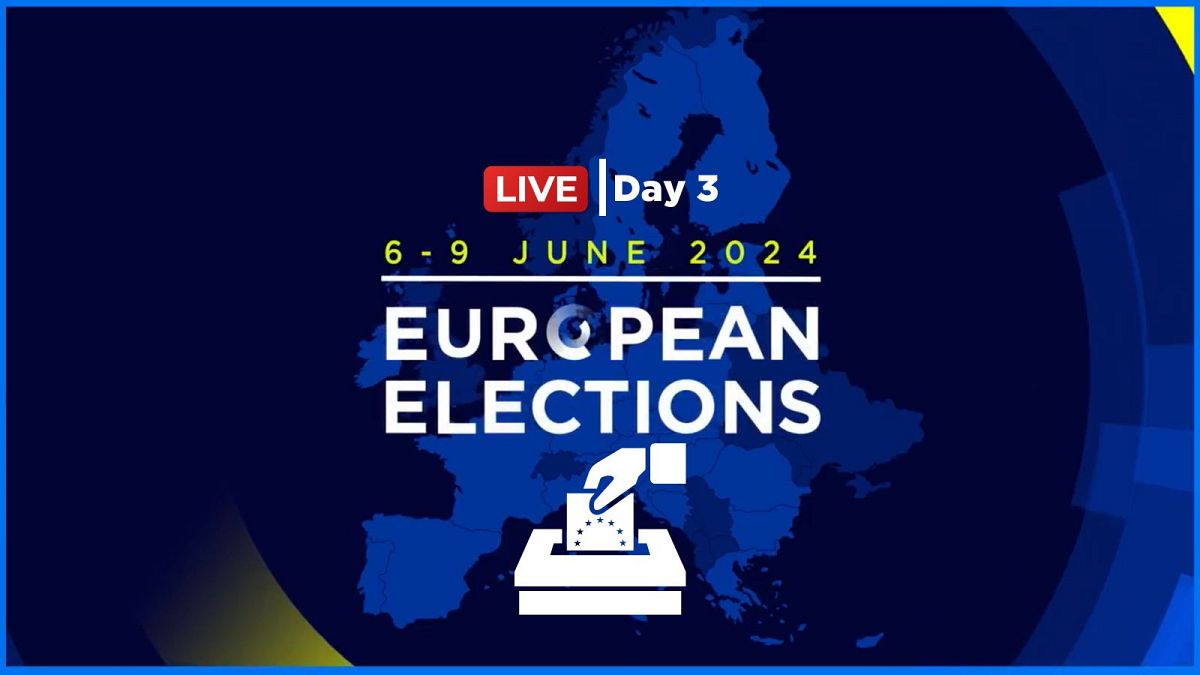Apple’s been talking about its next generation of CarPlay for two years now with very little to show for it — the system is designed to unify the interfaces on every screen in your car, including the instrument cluster, but so far only Aston Martin and Porsche have said they’ll ship cars with the system, without any specific dates in the mix.
Technology
Intel says it still doesn’t have the true fix for its crashing i9 desktop chips
/cdn.vox-cdn.com/uploads/chorus_asset/file/24125942/intel_13900_2_tomwarren.jpg)
For months, Intel’s highest-end desktop gaming processors have had a strange tendency to occasionally make games crash — and despite what you might have seen earlier today, Intel says it doesn’t have a final fix for its 13th and 14th Gen Intel Core i9 “Raptor Lake” and “Raptor Lake S” chips just yet.
“Contrary to recent media reports, Intel has not confirmed root cause and is continuing, with its partners, to investigate user reports regarding instability issues on unlocked Intel Core 13th and 14th generation (K/KF/KS) desktop processors,” reads a statement via Intel spokesperson Thomas Hannaford.
It continues: “The microcode patch referenced in press reports fixes an eTVB bug discovered by Intel while investigating the instability reports. While this issue is potentially contributing to instability, it is not the root cause.”
Intel’s official statement references (and partially confirms) leaked internal Intel documents obtained by Igor’s Lab earlier today. Those documents suggest that part of the problem is how Intel’s chips have been erroneously overclocking their own cores, using a feature called Enhanced Thermal Velocity Boost (eTVB), even when they should have known they were running too hot to do that.
“Root cause is an incorrect value in a microcode algorithm associated with the eTVB feature,” that leaked document began. It continued:
Failure Analysis (FA) of 13th and 14th Generation K SKU processors indicates a shift in minimum operating voltage on affected processors resulting from cumulative exposure to elevated core voltages. Intel® analysis has determined a confirmed contributing factor for this issue is elevated voltage input to the processor due to previous BIOS settings which allow the processor to operate at turbo frequencies and voltages even while the processor is at a high temperature. Previous generations of Intel® K SKU processors were less sensitive to these type of settings due to lower default operating voltage and frequency.
Intel® requests all customers to update BIOS to microcode 0x125 or later by 7/19/2024.
This microcode includes an eTVB fix for an issue which may allow the processor to enter a higher performance state even when the processor temperature has exceeded eTVB thresholds.
But while Intel confirms eTVB was potentially part of the problem, it’s apparently not the “root cause” of the whole issue.
Here’s hoping we get a full fix soon.

Technology
Meta releases Threads API for developers to build “unique integrations”
/cdn.vox-cdn.com/uploads/chorus_asset/file/24774110/STK156_Instagram_threads_1.jpg)
The Threads API is now available, meeting a promised launch by the end of June. The free API will allow developers to build “unique integrations” into Threads, and potentially even result in third-party apps for Meta’s competitor to what was previously known as Twitter.
“People can now publish posts via the API, fetch their own content, and leverage our reply management capabilities to set reply and quote controls, retrieve replies to their posts, hide, unhide or respond to specific replies,” explains Jesse Chen, director of engineering at Threads.
Chen says that insights into Threads posts are “one of our top requested features for the API,” so Meta is allowing developers to see the number of views, likes, replies, reposts, and quotes on Threads posts through the API. Meta has published plenty of documentation about how developers can get started with the Threads API, and there’s even an open-source Threads API sample app on GitHub.
Meta has been testing the Threads API with a small number of developers: Grabyo, Hootsuite, Social News Desk, Sprinklr, Sprout Social, and Techmeme. These test integrations have allowed sites like Techmeme to automate posting to Threads, or Sprout and Hootsuite customers to feed Threads posts into the social media management platform.
We’re now waiting to see if developers will be able to easily build a third-party Threads app with this new API that’s not connected to a social media management platform. The existing fediverse beta could help with that, allowing Threads users to access posts through Mastodon clients and share content to Mastodon servers. The current beta of the fediverse integration doesn’t let users view replies and follows from the fediverse though, so it’s far from being feature complete as an alternative to third-party Threads apps.
Technology
Sims competitor Life by You has been canceled
/cdn.vox-cdn.com/uploads/chorus_asset/file/25495498/ss_4d8b67ddcd2c05453a4f76597081700b2ab00d29.jpg)
The game, which was first revealed in 2023, sounded impressive: it was designed to allow for the entire town to be simulated in real-time and have no loading screens. However, based on a forum post by Paradox’s deputy CEO Mattias Lilja, the game had some issues that may not have been easily fixable even with additional time for development.
“A few weeks back, we decided to hold off on an Early Access release in order to re-evaluate Life by You, as we still felt that the game was lacking in some key areas,” Lilja says. “Though a time extension was an option, once we took that pause to get a wider view of the game, it became clear to us that the road leading to a release that we felt confident about was far too long and uncertain.”
Lilja says that the game “had a number of strengths,” but the company realized that “when we come to a point where we believe that more time will not get us close enough to a version we would be satisfied with, then we believe it is better to stop.”
The Life by You team hasn’t been the only one trying to make a new take on The Sims: former XCOM developers recently launched Midsummer Studios to develop a new life sim game of their own. But EA is hard at work on more Sims as well, developing a new free-to-play Sims game codenamed Project Rene.
Technology
Apple’s fancy new CarPlay will only work wirelessly
/cdn.vox-cdn.com/uploads/chorus_asset/file/23612558/Apple_WWDC22_iOS16_CarPlay_220606.jpg)
And the public response from the rest of the industry towards next-gen CarPlay has been pretty cool overall. I talk to car CEOs on Decoder quite often, and most of them seem fairly skeptical about allowing Apple to get between them and their customers. “We have Apple CarPlay,” Mercedes-Benz CEO Ola Källenius told me in April. “If, for some of the functions, you feel more comfortable with that and will switch back and forth, be my guest. But to give up the whole cockpit head unit — in our case, a passenger screen and everything — to somebody else? The answer is no.”
That industry skepticism seems to have hit home for Apple, which posted two WWDC 2024 videos detailing the architecture and design of next-gen CarPlay. Both made it clear that automakers will have a lot of control over how things look and work, and even have the ability to just use their own interfaces for various features using something called “punch-through UI.” The result is an approach to CarPlay that’s much less “Apple runs your car” and much more “Apple built a design toolkit for automakers to use however they want.”
See, right now CarPlay is basically just a second monitor for your phone – you connect to your car, and your phone sends a video stream to the car. This is why those cheap wireless CarPlay dongles work – they’re just wireless display adapters, basically.
But if you want to integrate things like speedometers and climate controls, CarPlay needs to actually collect data from your car, display it in realtime, and be able to control various features like HVAC directly. So for next-gen CarPlay, Apple’s split things into what it calls “layers,” some of which run on your iPhone, but others which run locally on the car so they don’t break if your phone disconnects. And phone disconnects are going to be an issue, because next-generation CarPlay only supports wireless connections. “The stability and performance of the wireless connection are essential,” Apple’s Tanya Kancheva says while talking about the next-gen architecture. Given that CarPlay connectivity issues are still the most common issue in new cars and wireless made it worse, that’s something Apple needs to keep an eye on.
There are two layers that run locally on the car, in slightly different ways. There’s the “overlay UI,” which has things like your turn signals and odometer in it. These can be styled, but everything about it is entirely run on your car, and otherwise untouchable. Then there is the “local UI,” which has things like your speedometer and tachometer — things related to driving that need to update all the time, basically. Automakers can customize these in several ways – there are different gauge styles and layouts, from analog to digital, and they can include logos and so on. Interestingly, there’s only one font choice: Apple’s San Francisco, which can be modified in various ways, but can’t be swapped out.
Apple’s goal for next-gen CarPlay is to have it start instantaneously — ideally when the driver opens the door — so the assets for these local UI elements are loaded onto the car from your phone during the pairing process. Carmakers can update how things look and send refreshed assets through the phone over time as well — exactly how and how often is still a bit unclear.
Then there’s what Apple calls “remote UI,” which is all stuff that runs on your phone: maps, music, trip info. This is the most like CarPlay today, except now it can run on any other screen in your car.
The final layer is called “punch-through UI,” and it’s where Apple is ceding the most ground to automakers. Instead of coming up with its own interface ideas for things like backup cameras and advanced driver-assistance features, Apple’s allowing carmakers to simply feed their existing systems through to CarPlay. When you shift to reverse, the interface will simply show you your car’s backup camera screen, for example:
But carmakers can use punch-through UI for basically anything they want, and even deeplink CarPlay buttons to their own interfaces. Apple’s example here is a vision of multiple colliding interface ideas all at once: a button in CarPlay to control massage seats that can either show native CarPlay controls, or simply drop you into the car’s own interface.
Or a hardware button to pick drive modes could send you to either CarPlay settings, deeplink you into the automaker’s iPhone app, or just open the native car settings:
Apple’s approach to HVAC is also what amounts to a compromise: the company isn’t really rethinking anything about how HVAC controls work. Instead, it’s allowing carmakers to customize controls from a toolkit to match the car system and even display previews of a car interior that match trim and color options. If you’ve ever looked at a car with a weird SYNC button that keeps various climate zones paired up, well, the next generation of CarPlay has a weird SYNC button too.
All of this is kept running at 60fps (or higher, if the car system supports it) by a new dedicated UI timing channel, and a lot of the underlying compositing relies on OpenGL running on the car itself.
All in all, it’s a lot of info, and what feels like a lot of Apple realizing that carmakers aren’t going to just give up their interfaces — especially since they’ve already invested in designing these sorts of custom interfaces for their native systems, many of which now run on Unreal Engine with lots of fun animations, and have Google services like Maps integrated right in. Allowing automakers to punch those interfaces through CarPlay might finally speed up adoption – and it also might create a mix-and-match interface nightmare.
All that said, it’s telling that no one has seen anything but renders of next-gen CarPlay anywhere yet. We’ll have to see what it’s like if this Porsche and Aston ever arrive, and if that tips anyone else into adopting it.
-

 Movie Reviews1 week ago
Movie Reviews1 week ago‘Darkest Miriam’ Review: Britt Lower in a Marvel of a Drama About a Young Librarian’s Loves and Fears
-

 Politics1 week ago
Politics1 week agoGun group vows to 'defend' Trump's concealed carry license after conviction
-

 Politics1 week ago
Politics1 week agoShould Trump have confidence in his lawyers? Legal experts weigh in
-

 Politics1 week ago
Politics1 week agoGOP releases Jan. 6 clip of Pelosi saying 'I take responsibility' as she discussed National Guard absence
-

 News1 week ago
News1 week agoTrump to escalate blame on trial judge Juan Merchan if sentenced to prison
-

 World1 week ago
World1 week agoOrban party loses major support in Hungary's EU election
-

 World1 week ago
World1 week agoEU elections: Slovakia and Italy voting; Far-right surge expected
-

 World1 week ago
World1 week agoUkraine reconstruction official quits citing ‘systemic obstacles’














